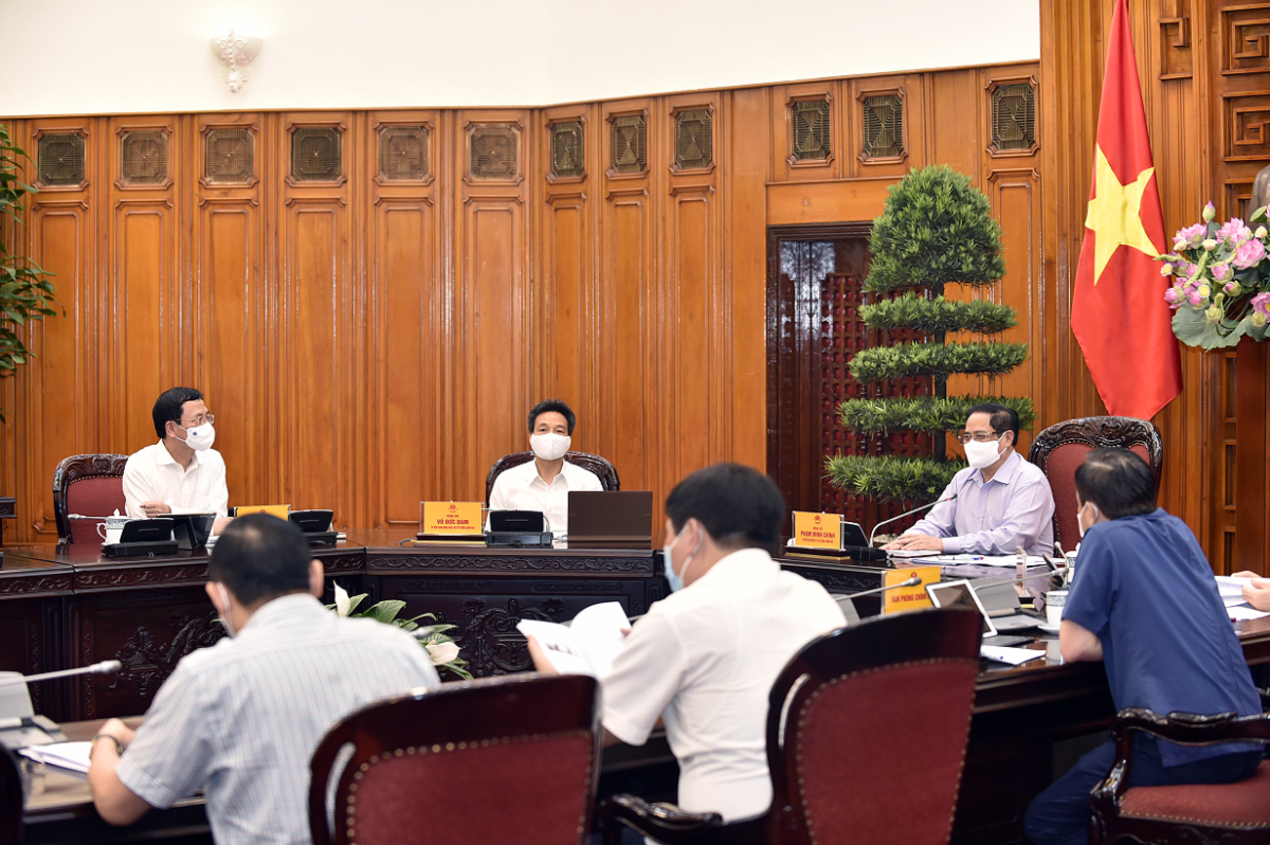
The Ministry has set goals to provide 5G coverage nationwide in 2022 and increase the number of digital enterprises from 58,000 to 100,000 by 2025, according to the Minister of Information and Communications (MIC) Nguyen Manh Hung. In Vietnam, MIC has licensed domestic telecom operators like VNPT, Viettel, and MobiFone to provide 5G services. They have been officially developing their networks to enable 5G services since last December.
The Ministry’s new mission is to lead the national digital transformation process to build a digital Vietnam, including a digital government and economy, and eventually a digital society, according to the Minister. He made the statement at a working session with Prime Minister Pham Minh Chinh earlier this week. Another objective of the ministry’s immediate tasks is to propose amendments to laws on the post, telecommunications, and e-transactions to “enrich contents” on the digital economy and infrastructure, according to a press release.
Minister Nguyen Manh Hung said that the digital economy, which accounted for 8.2% of Vietnam’s GDP in 2020, will open up a new space for the country’s economic growth. Vietnam expects to raise the GDP share of the digital economy by 20% within the next five years.
In 2018, a report by Google and Temasek referred to Vietnam’s digital economy as a “dragon being unleashed.” Two years later, the same report put Vietnam and Indonesia as countries at the forefront of Southeast Asia’s digital economy growth. Speaking at the session, PM Pham urged the Ministry to mobilise all resources for the development of strategic infrastructures and spearhead sectors.
Last month, MIC announced it is gathering ideas for a draft circular on a national technical regulation on 5G user equipment-the part of Radio Access to control the overall quality. Global mobile giants are subject to new applications.
OpenGov Asia reported that the draft circular comes amid a rising availability of user devices, both made domestically and imported, and growing demands for 5G services in line with international practices. According to MIC statistics on end-user trends in the last five years, the use of traditional mobile services and SMS tended to fall, while data-based services tended to rise, thus bringing about more opportunities for domestic and international businesses in the field.
At present, territorial mobile terminal devices are being managed via the certificate of conformity and declaration of conformity. Technologies related to 5G currently under assessment include, among others:
- The new global standard New Radio for a unified and more capable 5G wireless air interface.
- A virtualisation method through software-defined networking, which allows administrators to control and change the networks remotely.
- Network Function Virtualisation, another 5G-enabling technique.
As the country is currently taking the final steps for the issuance of the national technical regulation, the question about the possible impacts on telecom and mobile device suppliers is being raised, with industry insiders giving controversial signals. Popular mobile terminal device manufacturers like Apple, Samsung, and Nokia have announced conformity to technical specifications for their devices. Apple produces mobile terminal devices like iPhones, iPads, and iWatchs, among others. Meanwhile, the company already announced its declaration of conformity for 5G radio interfaces. Samsung also made its declaration of conformity for mobile phones based on the draft regulation 3GPP TS 38.521.
















